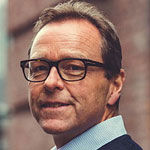
‘Hello Ed’. That’s how messages used to start on the hyperlocal site I ran in Preston, Lancashire (Blog Preston). But they weren’t to me, they were to the brand. To me, creating a strong community meant getting out there to report on it – either digitally, or physically. A strong editor, or journalist, transcends brands and that community knows to come to that journalist if they want to tell a story.
But how do you reach that point? Hard yards is one. Wherever I’ve been a reporter, I’ve gone to offline meetings, be that old-school PACT meetings, or specialist events, and you make it clear you’re interested. That builds up your connections, and you solidify those by making sure you then follow those organisations and people online – be that through Twitter, Facebook, LinkedIn, Insta – wherever they choose to roam online.
Then you make sure you’ve got some great monitoring tools set up, DataMinr alerts, Twitter lists, so when those contacts put something out – you’ve got it first, but you’ve also got their phone number / email address to be able to get the story behind the story. And they know it’s you when you slide into their DMs or give them a call.
Build connections. Build trust. Build a local story machine to support your journalism.
I believe building an audience of scale is important – that’s what we do at Reach – and absolutely we want to see stories reach huge audience numbers. But we also recognise we need to run other stories too – and that’s where InYourArea has come in.
When you’re focused on ensuring there’s a good quality feed of local news and information, your context mix is different and community is at the heart of that.
I also think back to my first role with Reach, within the digital team at WalesOnline in 2010. We did great stuff – live blogged conference, held webchats with then Prime Minister David Cameron and Wales rugby coach Warren Gatland, launched a Wales Assembly election podcast. The trouble we had then was our audience was relatively small, so the quality was high, but our reach was poor.
Do that now and it’s a different ball game. We need people to see local and regional news sites both as a place to come to be informed, and entertained, but also as a place to have a conversation.
So, for me, building a successful community sits at the heart of what our editors and journalists should be doing each day – and then utilising that audience scale we’ve worked so hard to create in the past decade – to engage and invite in those readers and turn them from readers to people actively using our websites and apps to have conversations. That’s community.
Building a successful community sits at the heart of what our editors and journalists should be doing each day.
This article is part of our ‘Building Successful Communities’ special feature, looking at how publishers go about creating engaged and vibrant communities. The feature includes the following articles by publishers and suppliers:
Build engagement on your platform, by Sally Arnold
The money is in the conversation, by Lucy Brazier
Create spaces online to share opinions, by Gary Clement
Community first, magazine second, by Sophie Cross
Publishers are taking community seriously, by Ashley Friedlein
Find the right voice, by Esther Newman
Audience engagement is top priority, by Charles Thiede
Build connections & be interested, by Ed Walker
This article was first published in InPublishing magazine. If you would like to be added to the free mailing list, please register here.












